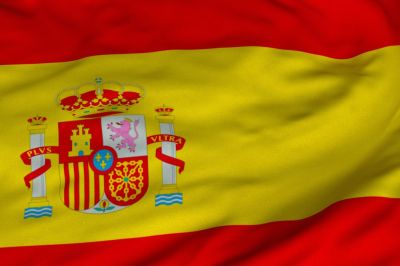
Public universities and private universities are founded pursuant to a specific act passed by the Legislative Assembly of the region where the institution will be located, or an act approved by the Spanish Parliament, at the proposal of the central government and in accordance with the relevant Autonomous Community Council. A report from the General Conference for University Policy is also mandatory.
Public universities are integrated by University Schools,
Faculties, Departments, University Institutes for Research, Doctoral
Colleges and by other necessary schools or structures for the
development of their functions. The requirements for the establishment
and the maintenance of these institutions are established by the
Government, once a report by the General Conference for University
Policy and the Council of Universities has been issued.
University Schools and Faculties are
the institutions responsible for the organisation of their studies and
in charge of academic, administrative and implementation processes of
the regulations that lead to the conferment of the different
university degrees. Their creation, modification and abolishment, as for
the implementation and abolishment of studies leading to the obtainment
of an official university degree and validated nationwide must be
accorded with the Autonomous Community to which the university belongs
either through the Autonomous Community's initiative gaining the
agreement of the Government Council of the university, or through
the university's own initiative through a proposal of the Government
Council, in both cases with a previous favourable report on behalf of
the Social Council.
Departments are teaching and research units in charge of coordinating studies of one or more fields of knowledge in one or more university centres according to the teaching schedule of the university. They support teaching and research activities and initiatives of the teaching staff as for exerting all other functions appearing in their statutes. The establishment, modification and abolition of departments correspond to the university, according to its statutes.
Universities may also have university research institutes. Their activity focuses mainly on technical and scientific research and on artistic creation. These centres are also entitled to offer graduate programmes (Master's degrees or PhDs). University research institutes may belong to more than one university. They can also be the established by public or private organisations by means of collaboration agreements or specific arrangements. Furthermore, universities can create joint research institutes, in cooperation with other public research bodies, with the National Health Service and with public or private non-profit research centres.
Furthermore, universities and public authorities promote the creation of integrated higher education areas, which develop new channels of collaboration between the production sector, universities, vocational training institutions and other dependent bodies, so as to encourage business and scientific innovation. Therefore, an integrated higher vocational area consists of a university campus which incorporates vocational training centres offering higher vocational training, specialised in professional families which are related to the areas of specialisation of university colleges operating in the same campus.
The official regulations which establish the structure of PhD programmes also authorize the creation of Doctoral Colleges, the objective of which is to organise provision at this level into one or more interdisciplinary knowledge branches, which may also include official science-oriented Master programmes, as well as many other types of training activities in the area of research. These colleges may be founded by one or more universities, with the possible participation of other bodies, centres, institutions or national and international entities which carry out R&D activities.
Public universities may also have public or private associated centres offering official study programmes. The association is established by means of an agreement which requires to be endorsed by the relevant regional government, at the proposal of the University Government Council, once the proposal has been positively informed by the University Social Council. Associated centres must be established within the territorial scope of the relevant regional government, or receive approval from the regional government where they are located.
Private universities and university private centres may be created by any individual or legal entity, regarding that they respect the constitutional principles as they are subject to State and Autonomous regulations. University private centres must be integrated into a private university as centres belonging to the university or they must be ascribed to a public or private university.
Private universities elaborate and approve their own regulations for their organisation and functioning. These must respect and guarantee, through a broad participation of the university community, the academic freedom manifested in the academic freedom, research and study.
In order to guarantee the quality of universities and university centres a series of requisites are established to which they must comply with whether they were already in existence or whether they were recently created. From these the Autonomous Communities establish the specific requirements for the universities to establish themselves in their territory. For detailed information on the minimum requirements of university centres see the article on Organisation of Private Education.
Both public and private universities, together with university centres must be registered in the Register of Universities, Centres and Qualifications (RUCT).
In 2011-2012, the Spanish university system was integrated by 79 universities, 50 of which were public and 29 private. Six universities (one public and five private) organise distance education. In addition, there are two universities with a special status, since they only provide specialised graduate programmes (Master's degrees and PhDs).
Higher Vocational Training may be offered in different types of institutions, namely, in secondary education schools, which also organise Compulsory Secondary Education (ESO) provision and Bachillerato programmes, in national reference centres and in integrated Vocational Training centres. For detailed information on these centres see the article on Organisation of the Education System and of its Structure.
Regardless of public or private ownership, these institutions are
subject to the same minimum requirements. Among these, the highlighted
minimum requirements of the spaces established in the regulation of each
qualification and the equipments established by the Educational
Authorities in order to achieve the results of each vocational module.